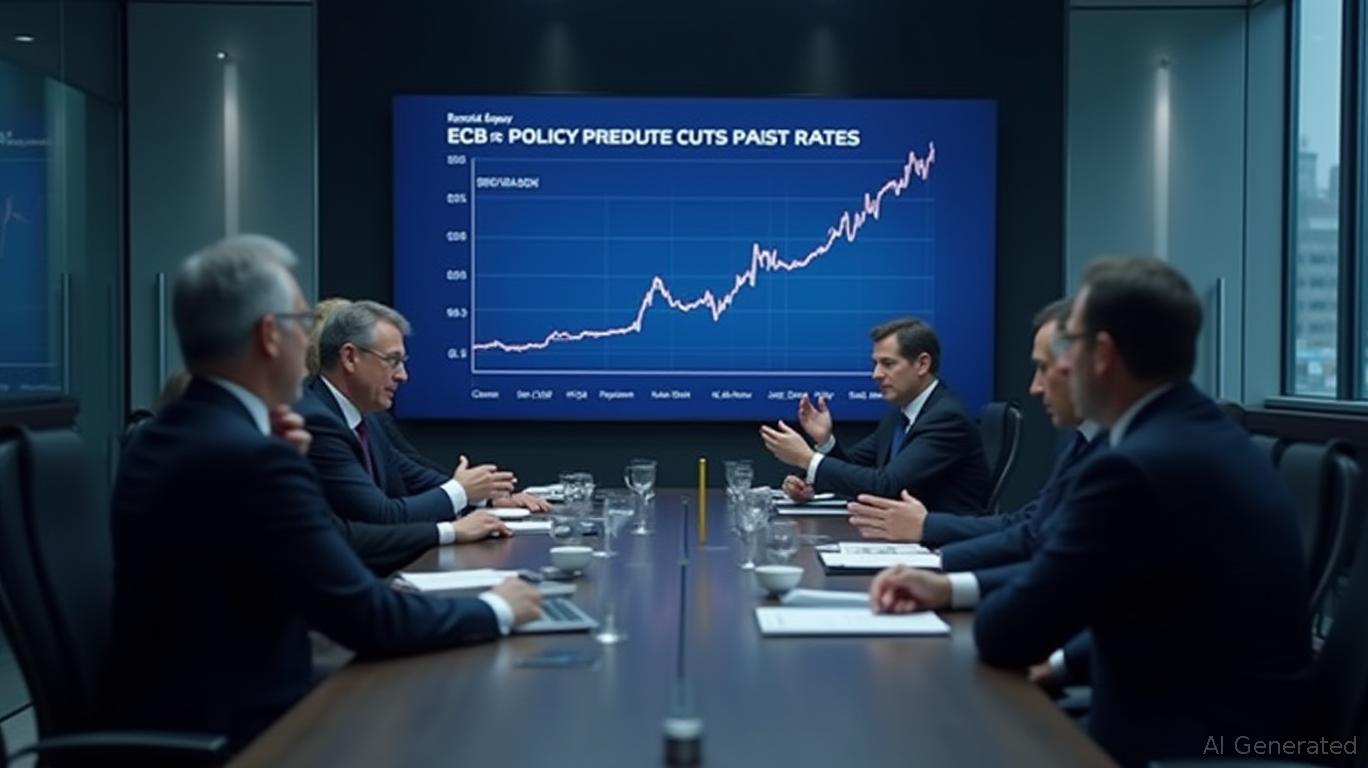ECB's Pause Signals EUR Rebound: Navigating Policy Divergence and Equity Opportunities
The European Central Bank's (ECB) decision to cut rates for the eighth time since mid-2024, while signaling a potential summer pause, marks a pivotal moment for EUR/USD dynamics and European equities. With inflation stabilizing near the ECB's 2% target and growth projections revised downward, the central bank's pivot to caution offers investors a clear roadmap for positioning in a diverging policy landscape. This article explores how the ECB's dovish pause reshapes currency and equity markets, with actionable insights for capitalizing on emerging opportunities.

Policy Divergence: ECB's “Neutral” Stance vs. Global Peers
The ECB's deposit rate now sits at 2.0%, deemed “neutral” by policymakers—neither stimulating nor restricting growth. This contrasts sharply with the U.S. Federal Reserve, which has maintained a hawkish tone amid domestic inflation resilience. While the ECB's easing cycle has cooled, the Fed's reluctance to cut rates has amplified the EUR/USD differential, a key driver of currency movements.
The ECB's data-dependent approach—avoiding pre-commitment to further cuts—reflects its unique challenges: trade tensions, a stronger euro, and subdued core inflation. Meanwhile, the Fed's focus on labor market tightness and services inflation keeps its policy path distinct. This divergence creates a sweet spot for EUR bulls, as reduced rate-cut expectations in Europe may limit downside pressure against a U.S. dollar constrained by Fed hesitancy.
EUR/USD: Why the Currency Could Rebound
The ECB's pause has already reshaped market pricing: traders now assign just 20% probability to a July rate cut, down from near certainty in May. This shift has stabilized EUR/USD, which had fallen to 1.0650 in May amid fears of aggressive easing. A sustained EUR rebound is plausible under two scenarios:
- Policy Pause Sustains EUR Carry Trade: With the ECB's terminal rate now seen closer to 1.58%, the euro's interest rate advantage over the dollar (which trades at a lower policy rate) could attract carry traders.
- Trade Tensions Ease, Boosting Eurozone Exports: A resolution of U.S.-EU tariff disputes could lift EUR/USD above 1.10, as export-heavy sectors like automotive and machinery gain pricing power.
European Equities: Selective Exposure in Rate-Sensitive Sectors
The ECB's confidence in a soft landing—where inflation moderates without stifling growth—supports selective equity exposure:
1. Banks & Financials
Lower-for-longer rates reduce mortgage refinancing risks and stabilize net interest margins. Look to French and German banks (e.g., BNP Paribas, Deutsche Bank) benefiting from stable funding costs and
liquidity tools like the Transmission Protection Instrument.2. Infrastructure & Utilities
Government spending on defense and green transition projects (e.g., renewable energy grids) aligns with the ECB's emphasis on structural reforms. Sectors like renewables and transport infrastructure could outperform if fiscal stimulus accelerates.
3. Cyclical Consumer Discretionary
A resilient labor market (unemployment at 6.2%) and rising real incomes support spending in travel, luxury goods, and tech. LVMH and Klarna exemplify firms leveraging consumer resilience.
Risks and Hedging Strategies
While the ECB's pause is bullish for EUR and equities, three risks demand caution:
- Trade Tensions Escalate: A U.S. tariff hike on European goods could derail growth and reinstate EUR weakness. Hedge using short EUR/USD options or inverse ETFs (e.g., EUJ).
- Inflation Surges in 2026: Wage growth exceeding 3% or supply chain bottlenecks might force the ECB to hike rates. Diversify into inflation-linked bonds (e.g., BOBL futures).
- Global Recession Spillover: A U.S. slowdown could drag down European exports. Rotate into defensive sectors like healthcare or utilities.
Investment Thesis: Go Long EUR, Target Rate-Sensitive Equities
- Currency Play: Overweight EUR/USD at 1.08–1.10, with a stop-loss below 1.06.
- Equity Exposure:
- Banks: BNP Paribas (BNP.PA), Deutsche Bank (DBKGn.DE)
- Infrastructure: Engie (ENGI.PA), ACS (ACS.MC)
- Consumer Discretionary: LVMH (MC.PA), Zalando (ZALGn.DE)
- Hedge: Allocate 10–15% to inverse EUR/USD ETFs for downside protection.
The ECB's dovish pause is a buy signal for EUR and a green light for strategic equity exposure. With policy divergence and soft-landing optimism anchoring the outlook, now is the time to position for recovery in Europe's risk assets—while staying vigilant to geopolitical headwinds.

Comments
No comments yet